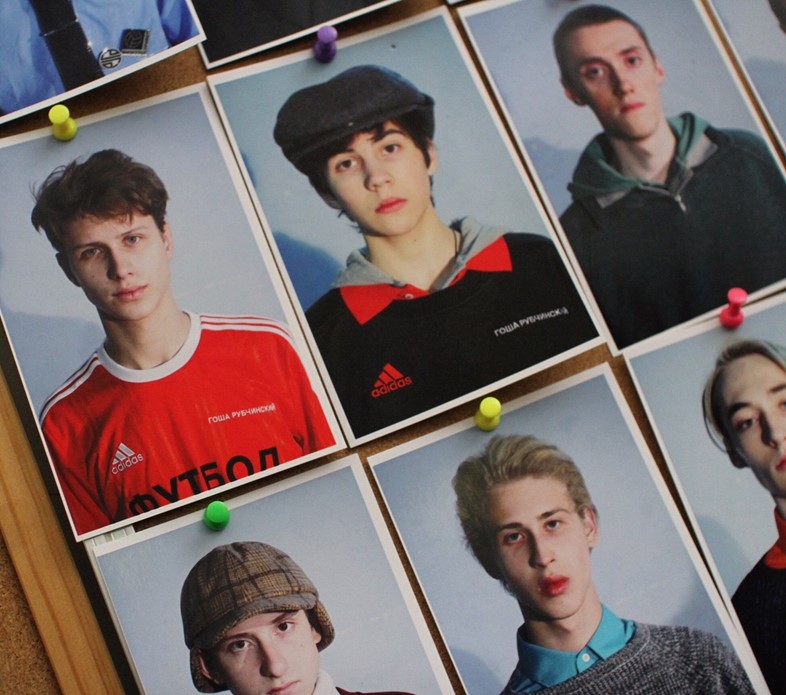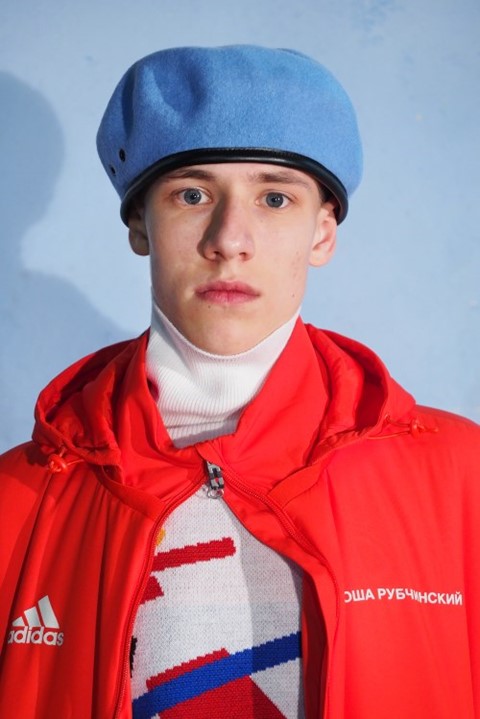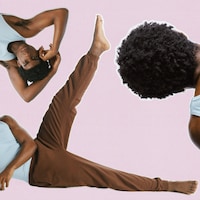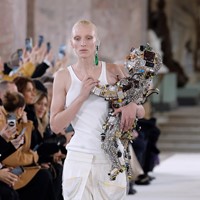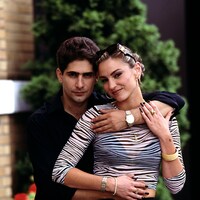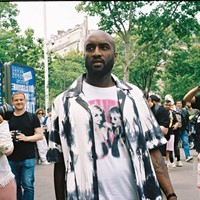This season, the designer goes back to his homeland to stage his show – here he explains why and recalls what adidas meant to him in his youth
Not unlike the current news cycle, the conversation which has dominated the last two years in fashion has been a story of East and West – of the stratospheric rise of figures from former Soviet countries who have, seemingly against the establishment odds, come to define our contemporary outlook on style and dressing. One such person is Gosha Rubchinskiy, who, since he began showing at Paris Fashion Week back in 2014, has become one of the most influential voices in menswear – producing sell-out collections, photo-books, and even a 17-minute silent film – all of which have earned him a host of followers dedicated to his Soviet skate aesthetic. But until yesterday, when he debuted his AW17 collection in the town of Kaliningrad’s Regional Centre of Youth Culture, Rubchinskiy had not shown in his native country of Russia since 2009.
For the designer, the formerly-German city separate from Russia’s mainland that he terms “a small piece of Russia in the middle of Europe” made perfect sense for showcasing his new season. While present in the clothes was some of the tailoring Rubchinskiy had experimented with last summer in Florence, as well as graphics inspired by avant-garde Russian artists like Alexander Rodchenko and Kazimir Malevich, at its heart was a football-focussed collaboration with German sportswear giant adidas. “In the Soviet Union, we didn’t have strong local sports brands,” Rubchinskiy explained of his youth post-show, recalling a tale about people customising their shoes to make them look like adidas, as well as his own excitement at receiving a new pair of trainers or a tracksuit from the brand when Russia’s borders and markets began to open up in the 1980s.
“I chose to have boys from around Russia... To me, it’s like a portrait of Russia, an image of the youth generation of today” – Gosha Rubchinskiy
For the designer, a foray into football gear (like the collection’s shirts and track pants) didn’t feel unnatural, but rather reflected the way that styles are shifting for his followers – rather than belonging to one tribe or the other, you can subscribe to more than one mode of dress without having to reject the alternatives. “In the 90s or 80s, it was separated: football fans were football fans and skaters were skaters,” he said. “But now things are changing, you see skate kids wearing football clothes and you can see football fans wearing skate stuff. Cultures mix, subcultures mix.” Rather than a one-off, the collaboration with adidas will unfold over the next few seasons in the run up to the 2018 World Cup, held in cities across Russia (including Kaliningrad).
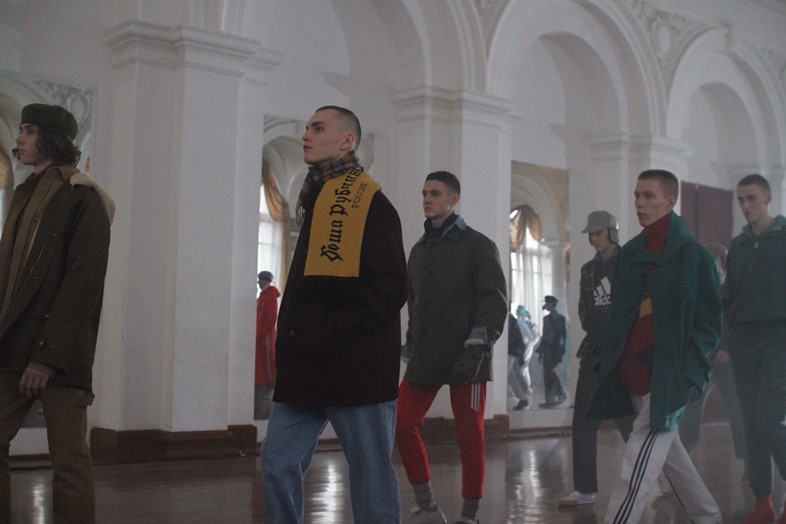
The show was “150% Gosha”, styled by Rubchinskiy and cast by Lumpen, with an all Russian line up of the designer’s go-to type (pale, slim and short-haired). The soundtrack by Buttechno was a departure from the usual beats, comprising only of the models’ voices, which announced their names, birthplaces, their hopes and dreams. As each walked out, adidas shoes squeaking against the polished wooden floor, their monologues echoed from the speakers, stacked in a corner like something from an Andrew Miksys image. Together, the cacophony was a collage of the contemporary Russian youth. “I chose to have boys from around Russia, I wanted to see what was happening in their minds,” Rubchinskiy shared. “To me, it’s like a portrait of Russia, an image of the young generation of today.”
“I chose to have boys from around Russia, I wanted to see what was happening in their minds. To me, it’s like an image of the young generation of today” – Gosha Rubchinskiy
At the end of last year, Kaliningrad found itself in a global spotlight thanks to the news that Vladimir Putin has moved missiles into the area, meaning they were close enough to attack Europe. With hacking rows and bribery claims, every week seems to bring increased diplomatic tensions between Russia and the West, but for Rubchinskiy it’s important that perceptions of his country and its people aren’t only shaped by what people may hear. “I like things that unite people, like music, fashion and football,” he explains. “I don’t believe and I don’t trust all the information on the news. It’s better to travel somewhere and meet people and speak to them – you should go and see what’s happening there. That’s why it was a good reason to come to Kaliningrad, and do the show here.”
Like Kaliningrad, Rubchinskiy is himself split between two worlds – his native Moscow, where he still lives and works, and the European fashion capitals where his clothes are shown, bought and (for the most part) worn. His is an unexpected success story, that someone who could appear to be such an outlier could win over so many, that the world and look of post-Soviet Russia could come to earn such a cultural cache for style-conscious Westerners. Yesterday, Rubchinskiy recalled a moment when, after his first show, he was asked whether the clothes he was putting forward could really be the future of fashion. Yes, he answered – give him ten years, and fashion could come to look like that. With this in mind, returning to unveil a collection – with an endorsement from adidas, no less – on Russian soil was a validation of all that he has worked for. “And now? It’s eight years later, and teenagers around the world like what we do,” he smiled. “I’m happy.”
